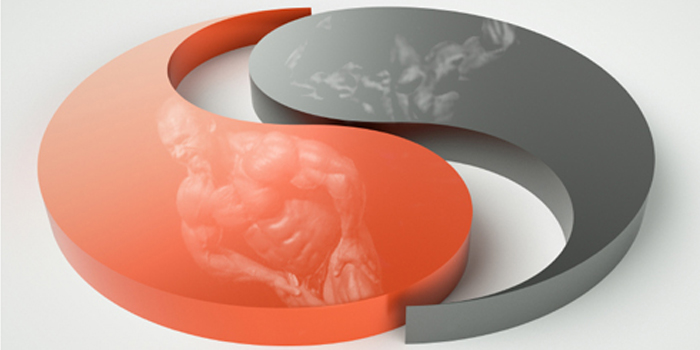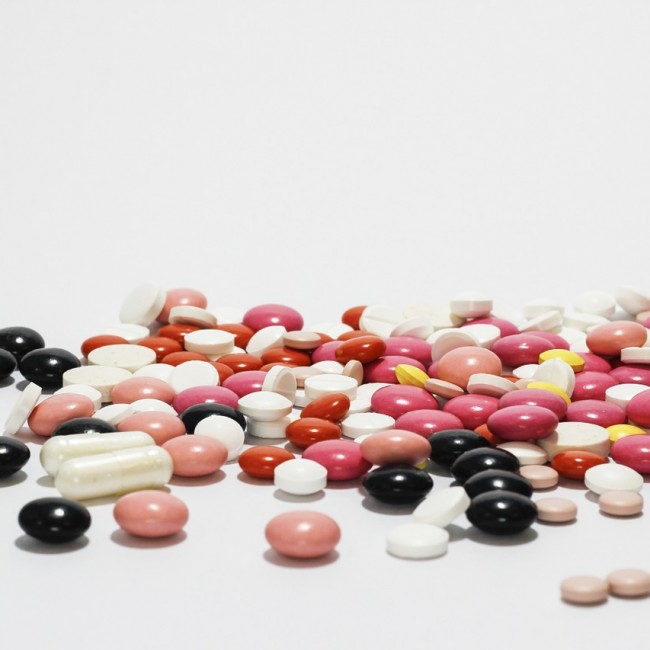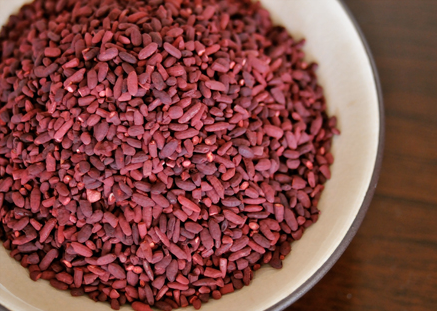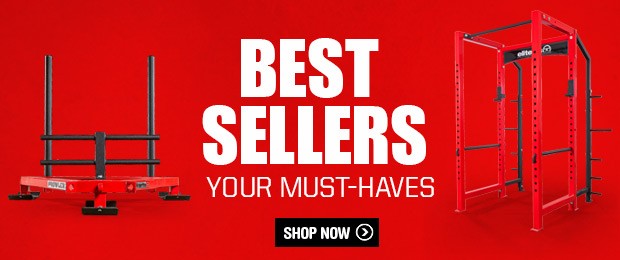
My dad tore his biceps a few years ago. It was just the short head on his left arm, but it was a full (distal tendon) tear nonetheless. He wasn’t as unhappy about it as his bodybuilding son might have been, but he wasn’t overjoyed in the least.
As a good (retired) doctor would, he talked it over with his prescribing physician, who thought it wise that he considered coming off the statin medication he had been prescribed to improve his lipid profile. Now some of you might be wondering, “What does Scott’s dad’s cholesterol medication have to do with a biceps tear?” Allow me to explain.
Statins: The Good
Statin medications (like Lovastatin or Simvastatin) inhibit an enzyme called HMG-CoA reductase, which reduces cholesterol biosynthesis along with a multitude of other effects on blood lipoproteins (1). Presumably via improving one’s blood lipid profile, statins thereby reduce the risk of dying from cardiovascular disease or other causes (2) from middle age onward (3) in both low (4, 5) and high risk individuals (6, 7).
Statins: The Not So Good
While statins do what they are prescribed for, these effects are not without controversy. For instance, the findings of one study that found statin use to be medically beneficial (8) has been criticized because of data under reporting (9). Moreover, the reported effects, albeit statistically significant (8), actually suggested that 86 people would need to be treated over five years to prevent only one non-fatal cardiovascular event (10). Similarly, practical significance of treating 200 people per year to prevent just one fatal or non-fatal heart attack, unstable angina or sudden cardiac death has been called into question (11). Statins are also frowned upon because they may increase the risk of diabetes (in those predisposed) and have been associated with erectile dysfunction, chronic obstructive pulmonary disease and renal injury, among other side effects (12). As you might have guessed, because statins mean big bucks for pharmaceutical companies, the potential for conflict of interest in medical research has not gone unnoticed (13).
Statins: The Not Good at All
Back to the case at hand. What does this have to do with the biceps muscle my dad tore while warming up? It’s become increasingly known that statins increase the risk of myopathy (pathological muscle tissue) with up to 5 percent of subjects in clinical trials registering complaints (14) and as many as one in five patients reporting this side effect in medical practice (15). The symptoms may range from simple muscle pain (myalgia) to quite severe (sometimes exercise-related) muscle breakdown (i.e. rhabdomyolysis).
Unfortunately, it’s uncertain exactly how statins may be causing this myopathy (15). One suggestion (15) is that statin interference CoQ10 metabolism (14) may cause myopathy (16). As if the risk is myopathy isn’t bad enough for a gym rat, disrupting CoQ10 synthesis also impairs mitochondrial function (17). Additionally, statin use can actually prevent the normal increase in muscle mitochondria brought on by endurance training (18). None of this bodes well for getting bigger, stronger or more fit, not to mention the longevity of my dad’s remaining biceps mass.
Alternative Medicine (Red Yeast Rice) to the Rescue?
Given my background as an acupuncturist and Chinese herbalist, an alternative medical route for keeping my dad’s lipids within range sprang to mind. Enter red yeast rice (RYR).
Red yeast rice (Monascus Purpureus) is a fungus-fermented, rice-based product that is actually sold as a patented Chinese herbal medicine product (19). The RYR patent “formula” is known as Xuè Zhī Kāng (血脂康) or “blood fat healthy” (20) and has been sold under other brand names such as cholestin (21) and cholestrix (19, 22). Indeed, scientific studies have suggested that RYR improves blood lipids similarly to statin therapy (23, 24) and can also protect against adverse cardiovascular events (25). Chalk one up for RYR.
Photo via letstalkvitamins.com
Is Natural Better?
The efficacy of RYR is highly plausible. RYR actually contains a number of HMG-CoA reductase inhibiting compounds called monacolins (26). Indeed, one of these is actually monacolin K, which is chemically identical to the prescription statin drug Lovastatin (19). Unfortunately for those seeking a pharmacological effect, the monacolin content in store-bought RYR may vary over a 20-fold range (19) and be miniscule in some products (21). RYR earns one demerit.
But It’s Natural!
So your RYR could be “under-dosed,” but are there any advantages in using a natural statin source? Indeed, one study suggested that RYR may be effective in individuals who previously had statin-induced myalgia (27). However, this study has been criticized on the grounds of poor experimental design (28) and, of course, that simply containing Lovastatin (29) means that RYR is an illegal drug if sold over the counter (26).
A follow-up study, again in patients with previous statin-related myalgia, found that these patients tolerated RYR as well as the prescription statin Pravastatin (24). Still, overall, 7 percent of patients had to withdraw due to myalgia. The main monacolin in the RYR used in this experiment was Lovastatin (24), and the levels of fungal toxin citrinin (19) were below the detection limit. Unfortunately, citrinin is found in many over-the-counter RYR products (30). Citrinin is particularly harmful to the kidneys (31) and may even cause genetic mutation (32).
To wit, the FDA made it known in 2007 that RYR may contain Lovastatin and cause renal harm (22). Jokes about spare kidneys aside, medically documented case studies (19) do in fact demonstrate an association between RYR and myopathy (33–35) as well as hepatitis [just like with other statins (19, 36)]. Add in at least one more demerit for RYR.
A Natural Perfect Storm?
Imagine an unsuspecting iron game aficionado (perhaps like yourself) who focuses on over-the-counter (OTC) and/or “natural” supplementation. He might use RYR to combat a poor lipid profile brought on by the use of other OTC supplements such as designer steroids (DS). The recent Designer Steroid Control Act of 2014 may have minimized this likelihood, but it’s been documented that previously widely available DS (37) such as Superdrol (38) can cause cholestatic jaundice and thus elevated cholesterol (39). [Similarly, non-OTC oral anabolic steroids can be rough on blood lipid profiles (40–42).] Considering that both DS and RYR can cause liver dysfunction and that someone pounding the weights could perhaps mistake pathological muscle pains (myalgia) for delayed onset muscle soreness (43), taking both of these supplements simultaneously could create a perfect storm of OTC supplement-related health issues. The demerit count rises.
The Choice Is Yours, Naturally
Of course, we’re still left with good old exercise (44) and dietary and other supplementation practices (like increasing fiber intake or taking omega-3 fatty acids or garlic supplements) to improve cardiovascular risk profile (45, 46). In fact, a simple dietary strategy designed around high levels of plant sterols, almonds, fiber and soy protein has been shown to be as effective for reducing LDL levels as a low fat control diet with added Lovastatin [20mg/d (47)].
Naturally, the decision is yours to include red yeast rice in your lipid-lowering supplement regime, but take heed. Doing so may also increase the chances that you also get to make a decision regarding the repair of a torn biceps.
References
- Stancu C, Sima A (2001)Statins: mechanism of action and effects. J Cell Mol Med 5(4):378–87.
- Trialists C (20102) The effects of lowering LDL cholesterol with statin therapy in people at low risk of vascular disease: meta-analysis of individual data from 27 randomized trials. The Lancet 380(9841):581–90.
- LaRosa JC, et al (1999) Effect of statins on risk of coronary disease: a meta-analysis of randomized controlled trials. JAMA 282(24):2340–6.
- Sever PS, et al (2003) Prevention of coronary and stroke events with atorvastatin in hypertensive patients who have average or lower-than-average cholesterol concentrations, in the Anglo-Scandinavian Cardiac Outcomes Trial--Lipid Lowering Arm (ASCOT-LLA): A multicentre randomized controlled trial. Lancet 361(9364):1149–58.
- Tonelli M, et al (2011) Efficacy of statins for primary prevention in people at low cardiovascular risk: A meta-analysis. Canadian Medical Association Journal.
- Ray KK, et al (2010) Statins and all-cause mortality in high-risk primary prevention: a meta-analysis of 11 randomized controlled trials involving 65,229 participants. Arch Intern Med 170(12):1024–31.
- Robinson JG (2013) Accumulating evidence for statins in primary prevention. JAMA 310(22):2405–6.
- Downs JR, et al (1998) Primary prevention of acute coronary events with Lovastatin in men and women with average cholesterol levels: results of AFCAPS/TexCAPS. Air Force/Texas Coronary Atherosclerosis Prevention Study. JAMA 279(20):1615–22.
- Krut LH (1999) Coronary events with lipid-lowering therapy: the AFCAPS/TexCAPS trial. Air Force/Texas Coronary Atherosclerosis Prevention Study. JAMA 281(5):414–9.
- Haq IU, et al (1999) Coronary events with lipid-lowering therapy: the AFCAPS/TexCAPS trial. Air Force/Texas Coronary Atherosclerosis Prevention Study. JAMA 281(5):414–9.
- Mason JM, Freemantle N (1999) Coronary events with lipid-lowering therapy: the AFCAPS/TexCAPS trial. Air Force/Texas Coronary Atherosclerosis Prevention Study. JAMA 281(5):415–9.
- Desai CS, et al (2014) Non-cardiovascular effects associated with statins. BMJ 349:3743.
- Kassirer JP. Why should we swallow what these studies say?
- Thompson PD, et al (2003) Statin-associated myopathy. JAMA 289(13):1681–90.
- Vrablik M, et al (2014) Statin-Associated Myopathy: From Genetic Predisposition to Clinical Management. Physiological Research 63:S327–S334.
- Emmanuele V, et al (2012) Heterogeneity of coenzyme Q10 deficiency: patient study and literature review. Arch Neurol 69(8):978–83.
- Marcoff L, Thompson PD (2007) The role of coenzyme Q10 in statin-associated myopathy - A systematic review. Journal of the American College of Cardiology 49(23):2231–37.
- Mikus CR, et al (2013) Simvastatin impairs exercise training adaptations. Journal of the American College of Cardiology.
- Klimek M, et al (2009) Safety and Efficacy of Red Yeast Rice (Monascus purpureus) as an Alternative Therapy for Hyperlipidemia. Pharmacy and Therapeutics 34(6):313–27.
- YellowBridge (2014) Mandarin Chinese-English Dictionary. Accessed at: http://www.yellowbridge.com/chinese/chinese-dictionary.php.
- United States Department of Health and Human Services (1998) Docket No. 97P-0441. F.a.D. Administration. Accessed at: http://www.fda.gov/ohrms/dockets/dockets/97p0441/ans0002.pdf.
- Food and Drug Administration (2007) FDA Warns Consumers to Avoid Red Yeast Rice Products Promoted on Internet as Treatments for High Cholesterol Products found to contain unauthorized drug. Accessed at: http://www.fda.gov/newsevents/newsroom/pressannouncements/2007/ucm108962.htm.
- Shang Q, et al (2012) A systematic review of xuezhikang, an extract from red yeast rice, for coronary heart disease complicated by dyslipidemia. Evid Based Complement Alternat Med 2012:636547.
- Halbert SC, et al (2010), Tolerability of Red Yeast Rice (2,400 mg Twice Daily) Versus Pravastatin (20 mg Twice Daily) in Patients With Previous Statin Intolerance. The American Journal of Cardiology 105(2):198–204.
- Zhao SP, et al (2007) Xuezhikang, an extract of cholestin, reduces cardiovascular events in type 2 diabetes patients with coronary heart disease: subgroup analysis of patients with type 2 diabetes from China coronary secondary prevention study (CCSPS). J Cardiovasc Pharmacol 49(2):81–4.
- Mark DA (2010) All Red Yeast Rice Products Are Not Created Equal—or Legal. The American Journal of Cardiology 106(3):448.
- Becker DJ, et al (2009) Red yeast rice for dyslipidemia in statin-intolerant patients: a randomized trial. Ann Intern Med 150(12):830–9.
- Le Couteur DG (2010) Red yeast rice for dyslipidemia in statin-intolerant patients. Ann Intern Med 152(2):134–6.
- Kolpakchi AL, et al (2010) Red yeast rice for dyslipidemia in statin-intolerant patients. Ann Intern Med 152(2):133–6.
- Heber D, et al (2001) An analysis of nine proprietary Chinese red yeast rice dietary supplements: implications of variability in chemical profile and contents. Journal Of Alternative and Complementary Medicine (New York, NY) 7(2):133–9.
- Bennett JW, Klich M (2003) Mycotoxins Clin Microbiol Rev 16(3):497–516.
- Donmez-Altuntas H, et al (2007) Effects of the mycotoxin citrinin on micronucleus formation in a cytokinesis-block genotoxicity assay in cultured human lymphocytes. J Appl Toxicol 27(4):337–41.
- Mueller PS (2006) Symptomatic myopathy due to red yeast rice. Ann Intern Med 145(6):474–5.
- Smith DJ, Olive KE (2003) Chinese red rice-induced myopathy. South Med J 96(12):1265–7.
- Prasad GV, et al (2002) Rhabdomyolysis due to red yeast rice (Monascus purpureus) in a renal transplant recipient. Transplantation 74(8):1200–1.
- Roselle H, et al (2008) Symptomatic hepatitis associated with the use of herbal red yeast rice. Ann Intern Med 149(7):516–7.
- Vilella AL, et al (2013) Cholestatic jaundice as a result of combination designer supplement ingestion. Ann Pharmacother 47(7–8):e33.
- Jasiurkowski B, et al (2006) Cholestatic jaundice and IgA nephropathy induced by OTC muscle building agent superdrol. Am J Gastroenterol 101(11):2659–62.
- Ahaneku JE, et al (1991) Changes in plasma high density lipoprotein cholesterol and phospholipid in acute viral hepatitis and cholestatic jaundice. J Intern Med 229(1):17–21.
- Strawford A, et al (1999) Resistance exercise and supraphysiologic androgen therapy in eugonadal men with HIV-related weight loss: A randomized controlled trial. JAMA 281(14):1282–90.
- Thompson PD, et al (1989) Contrasting effects of testosterone and stanozolol on serum lipoprotein levels. JAMA 261(8):1165–8.
- Applebaum-Bowden D, et al (1987) The dyslipoproteinemia of anabolic steroid therapy: increase in hepatic triglyceride lipase precedes the decrease in high density lipoprotein2 cholesterol. Metabolism 36(10):949–52.
- Kuipers H (1994) Exercise-induced muscle damage. Int J Sports Med 15:132–5.
- Tran ZV, et al (1983) The effects of exercise on blood lipids and lipoproteins: a meta-analysis of studies. Med Sci Sports Exerc 15(5):393–402.
- Eilat-Adar S, et al (2013) Nutritional recommendations for cardiovascular disease prevention. Nutrients 5(9):3646–83.
- Nijjar PS, et al (2010) Role of dietary supplements in lowering low-density lipoprotein cholesterol: A review. Journal of Clinical Lipidology 4(4):248–58.
- Jenkins DJ, et al (2003) Effects of a dietary portfolio of cholesterol-lowering foods vs Lovastatin on serum lipids and C-reactive protein. JAMA 290(4):502–10.














1. Marcoff L, and Thompson PD. The Role of Coenzyme Q10 in Statin-Associated Myopathy: A Systematic Review. J Am Coll Cardiol 49: 2231-2237, 2007. http://www.sciencedirect.com/science/article/pii/S0735109707010546
2. Vrablik M, Zlatohlavek L, Stulc T, Adamkova V, Prusikova M, Schwarzova L, Hubacek JA, and Ceska R. Statin-Associated Myopathy: From Genetic Predisposition to Clinical Management. Physiological Research 63: S327-S334, 2014.
Thanks.
I ***personally*** would go with niacin, given a choice of one over the other. There is an extended release version that is prescription only (I believe). Depending on your medical status, this is something to check with your doctor on, of course. (For example, there may be an additive effect of combining niacin and statins.)
-Scott